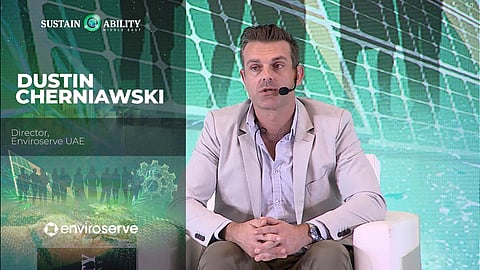e-Waste is Revenue-positive, but Harvesting it Effectively is a Challenge: EnviroServe
Electronic waste (e-waste) is a very desirable waste stream because it generates cash. The challenge is extracting that value and returning it to the circular economy in a form that benefits society and can be traced for the purpose of reporting it back, according to Dustin Cherniawski, Director of EnviroServe UAE.
Speaking at the Future of Sustainability Conference hosted by SME, Mr Cherniawski expressed concern over the fact that some nations do not require manufacturers to accept responsibility for the end of their products' useful lives.
In an answer to a question by host and moderator of the Conference Mr Karl W. Feilder about by-products of processing electronic waste, Mr Cherniawski said that plastic was the primary output in terms of volume.
He said: “Iron is the most produced material by weight, whereas copper is the most produced material by value. Copper may be found anywhere there is an electrical component, while platinum, palladium, gold, and silver can be found wherever there is an electronic component.”
The EnviroServe UAE Director further said: "e-Waste is mainly made up of precious materials as well as recyclable ones.
"All electronic waste has value, but we also need to take into account the revenue-negative components like beryllium, tantalum, cadmium, capacitors, mercury, batteries, leaded glass, etc. which are harmful if just thrown away."
Read More: UAE Makes Significant Progress in Circularity: EnviroServe


